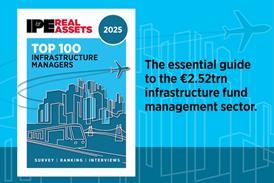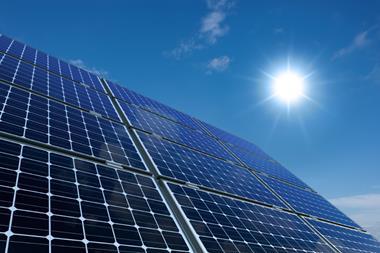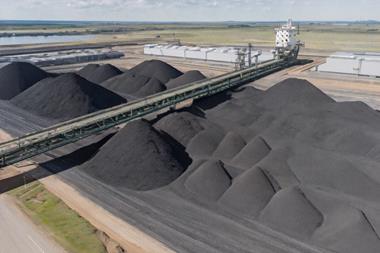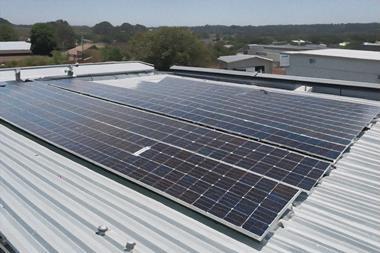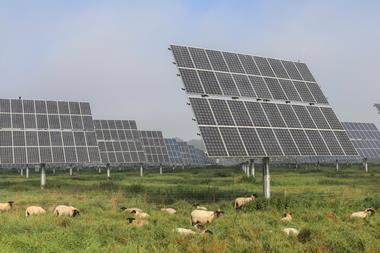Water scarcity and price variability affect real asset investments in several ways, says Harsh Parikh

India relies on the annual monsoon for more than 50% of the water required for agriculture. Consequently, a monsoon ‘failure’ not only reduces food grain production but also subtracts 2-5% percentage points from India’s annual GDP. Even developed countries like Australia and the US, which have generally dependable water resources are, at times, vulnerable to periods of water scarcity, which can reduce growth and harm real asset investments.
One UN sustainable development goal is ‘clean water and sanitation’, which seeks to increase water-use efficiency and ensure freshwater supplies. Besides its use for sanitation and drinking, freshwater is used in agriculture, power generation, metals production, energy refining and other industrial uses.
Since fresh water is in limited supply and has many and important uses, how can it be protected, conserved and allocated? According to the Coase Theorem, well-defined property rights and low transaction costs enable stakeholders to achieve efficient outcomes regardless of the initial allocation of property rights. With well-defined water rights and active water markets, water use can be efficiently transferred to where it is most highly valued.
Given the competition for fresh water, investors in real assets such as farmland, natural resources and infrastructure must plan and monitor their assets’ current and long-term water usage and water sourcing. Benchmarking water and estimating the water footprint is essential to improve water use efficiency.
How does water scarcity and price variability affect real asset investments?
Agriculture: During the peak drought year in 2014, California Central Valley farmers received significantly reduced deliveries of surface water requiring the pumping of additional groundwater and leaving significant acreage fallow. As a result, Central Valley groundwater has been depleted significantly. Over the last five years, counties with water shortages have seen farmland prices decline. For example, prices declined by about 15% in Tulare County. The observed land value declines might be due to factors such as crop age, crop yield and water scarcity. Like water scarcity, too much water is also a risk. El Niño rains can bring floods and uncultivated land is often susceptible to mudslide and erosion. While farmers usually mitigate such risk by through drainage, they might also use such flood waters to recharge depleted aquifers.
Infrastructure: Water is needed for hydroelectric and thermoelectric production. Periods of limited surface water availability affect energy production due to reduced hydropower generation and cooling for power plants. Although these water-related energy production deficits can be offset somewhat by solar and wind, such options are still costlier than hydro. Periods of limited water supply have financially impacted utility companies and related projects.
Natural resources: Mines require water for production and processing. Chile, which produces more than a quarter of the world’s copper supply, requires 500 gigaliters (GL) of water per year. Last year, Chile experienced its worst drought in decades, leading to reduced copper production and increased electricity costs, with severe consequences for industry margins. Mining companies have turned to seawater for a more dependable water supply, but this requires further capital expenditure.
Energy: The energy sector is heavily reliant on fresh water. To produce transportation fuel requires surprisingly high amounts of water, about 0.65 gallons of water per gallon of gasoline. Depending on the size and complexity of the refining process, refineries can use a lot of water, making them vulnerable to reduced water availability and related costs.
Water markets for trading water rights can help real asset investors manage their water needs. For example, in Australia there is significant variability in water prices. While prices historically have averaged about A$100-200/(€63.2/127.2) megaliters (ML), in 2006-07 – a severe drought year – the price of water peaked at A$1,000/ML at its worst. Water prices have even traded near zero in flood years. To try to dampen this volatility, Australia has a cap-and-trade water market in the Murray Darling Basin (MDB). Water users can trade allocated water rights via water brokers or electronic exchanges for any given year (ie, allocation trade), allowing water to be reallocated to higher value uses. Holders of water rights may even permanently trade their rights, also known as ‘entitlement trade’. Since 2009, more than 1,500GL of water has been traded per year.
While the agriculture sector is the main participant in the MDB water market, others include utilities, environmental programmes and investors, while domestic and foreign institutions have invested in permanent water rights. The commercial value of total southern MDB water entitlements is about A$26.3bn. The Aither Entitlement index which, measures performance of water entitlements in the southern MDB, has returned 7% annually since its inception in 2008. And, for some water entitlements, a percentage of unused allocated water can be carried over. The ability to trade water and to carry over water to subsequent years have helped participants through the region’s drought.
US states such as California, Texas, and Arizona have water markets that allow for short-term, long-term, or the permanent sale of water rights. Such markets allow cities, environmental programmes and farmers with higher value crops to secure water, especially during drought conditions. California has had water markets since the 1980s. During the past decade or so (2009-18) about 1,100GL of water has traded annually in the form of short-term and long-term leases of water rights. In 2020, after passage of the Sustainable Ground Management Act (SGMA) in 2014, the Fox Canyon Groundwater Management Agency, which oversees Ventura county’s groundwater resources, started a cap-and-trade-styled groundwater market. If agricultural producers can cut back water usage, they can trade unused allocation. Since an unused water allocation now has a tradeable value, producers have an incentive to save water. Water markets not only help recharge aquifers but also improve land value. Groundwater banks have a role in mitigating water shortages during dry seasons by ‘banking’ water in wet seasons for urban and agriculture use.
While water trading helps to hedge water availability, perhaps there is a way to hedge water prices. In 2014, surface-water spot-market transfer prices reached $2,500/ML when generally it averages below $500/ML.
Recently, the Chicago Mercantile Exchange launched a cash-settled water futures contract market based on the Nasdaq Veles California Water index. The water futures contract might help farmland operators and utilities by allowing them to hedge against potential price increases in anticipation of a drought. Real asset investors might also consider adding water hedges in their portfolios, since the price impact of water scarcity is a source of performance risk.
Although water scarcity creates a need for financial hedging instruments, it also creates opportunities for water infrastructure projects for water conveyance and storage.
Harsh Parikh is Principal, institutional advisory & solutions at PGIM


